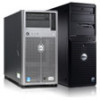Dell PowerEdge 2321DS Dell 1082DS/2162DS/4322DS Remote Console Switch Softw - Page 10
Operating Features, Target Device Naming, Target Device Name Displays - digital
 |
View all Dell PowerEdge 2321DS manuals
Add to My Manuals
Save this manual to your list of manuals |
Page 10 highlights
NOTE: Dell SIP modules are supported on directly connected Avocent switches. Operating Features The RCS software features include target device naming, target device name displays, sorting, and IPv4 and IPv6 network address capabilities. Appendix B: Keyboard and Mouse lists the Explorer navigation shortcuts. Other components also support full keyboard navigation in addition to mouse operations. Target Device Naming The software requires that each switch and target device have a unique name. To minimize the need for operator intervention, the software uses the following procedure to generate a unique name for a target device whose current name conflicts with another name in the database. During background operations (such as an automated operation that adds or modifies a name or connection), if a name conflict occurs, the conflicting name is automatically made unique. This is done by appending a tilde (~) followed by an optional set of digits. The digits are added in cases where adding the tilde alone does not make the name unique. The digits start with a value of one and are incremented until a unique name is created. During operations, if you or another user specifies a non-unique name, a message informs the corresponding user that a unique name is required. Target Device Name Displays When a switch is added, the target device names retrieved from the switch are stored in the software database. The operator can then rename the target device in the Explorer. The new name is stored in the database and used in various component screens. This new target device name is not communicated to the switch. Since the software is a decentralized management system, you can change the name assigned to a target device on the switch at any time without updating the software database. Each operator can customize a particular view of the list of target devices being managed. Since you can associate more than one name with a single target device - one on the switch and one in the software - the software uses the following rules to determine which name is used: 4 Product Overview















